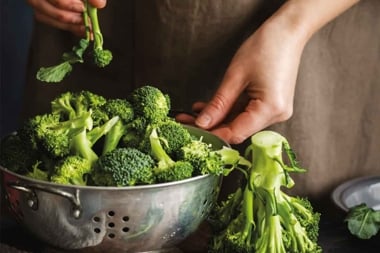Prepare for Your Garden Now!
There's nothing more enjoyable for a gardener in January than curling up on the sofa with a hot beverage and perusing nursery catalogue.
There's nothing more enjoyable for a gardener in January than curling up on the sofa with a hot beverage and perusing nursery catalogues. A new year begins!
The gardening season is still a stretch away and now is the time to make plans! January is the perfect month to attend to tasks that a gardener has little opportunity for during spring and summer.
A garden plan will help. Devise a landscape that will use your own creative gardening ideas and will serve as a guide for ordering plants and seeds from catalogues, which will arrive in the mail soon.
Create a small map of your garden, making note of sun, wind and rain exposure, structures or large specimen plants, obstacles such as hills, all of which will affect growing conditions. You can simply sketch the plots on a piece of paper or, if you have a computer, use a garden design software program. Review any garden notes about previous successes and failures.
When selecting plants, remember that it's not only colour that makes a pretty picture: form and structure, contrast and harmony, will enhance your landscape. Add texture with plants such as juniper and cedar shrubs or variegated foliage plants for contrast. And don't forget the winter garden. Besides evergreens, plants such as snowberries, beautyberries, red-twig and yellow-twig dogwoods will transform a flat featureless landscape into a winter wonderland. Structures such as birdbaths, gazing balls, a pot or even a trellis will add interest and a focal point.
Selecting Seeds and Plants
Seeds and some plants should be ordered now. Many growers have limited stock for rare plants or larger materials such as trees. Ordering early will ensure your plants are reserved for you, even if they are not shipped until spring. Seed packets may be shipped immediately since some seeds should be started early because of their long germination times.
Germination information is usually listed on each seed packet. This information will let you know how many days from the last frost date the seed should be started. It may also advise you of any special procedures required, such as stratification (chilling the seed before sowing) or scarification (soaking or nicking seed coat to speed germination). Many seed catalogues list germination times, temperatures and the amount of light required for various seeds. There are also informative books and Web sites on the Internet that have oodles of information on seeds.
To start seeds, the potting medium should be sterilized to avoid potential fungi. Mediums like vermiculite, perlite, or a pre-made commercial soilless mix can be used. Seedlings require bright light, either from a south-facing window or from grow lights, for 12 to 14 hours each day or they will become spindly and weak. Seeds need to be kept moist to germinate, either by covering with clear plastic covers or film, or by misting or watering daily. If using tap water, let it sit overnight to let any chlorine dissipate. Seedlings germinate best at a temperature of 16 to 20 C (60 to 70 F). Ventilation is needed to prevent fungi such as "damping off," a disease that destroys seedlings. Set up a fan nearby to blow on the plants and circulate the air and spray plants with camomile tea to help prevent fungi.
Once the first set of true leaves appear, seedlings need small applications of compost tea and fish emulsions. Finally, you must harden off your plants by placing them outdoors, one week to 10 days before transplanting the seedlings into your garden, so they gradually get accustomed to outdoor conditions.
Outside in the Garden
There are also outdoor jobs that can be done. January is an optimum month to mulch your garden to protect roots and crowns of perennials from freeze/thaw cycles that are abundant in late January and February and can heave roots from the ground. Lay a two to six inch layer of organic mulch such as straw, shredded leaves, bark chips, nuggets or evergreen boughs over the soil. Wander around the garden checking any coverings you may have placed over your plants in the fall to ensure they make it through the winter. Check for any tears or sagging that may have occurred from the frequent fall winds and rain. Look for damage done by animals. Pick up and discard any fallen fruit to avoid disease. Gently brush heavy snow from tree and shrub limbs to reduce the possibility of damage. (Do not attempt to knock off any ice or use water to melt it. Allow ice to melt naturally from limbs.) Take photos of the garden to help next year's planning.
A great garden takes preparation time. The effort will reap rewards this gardening season!




